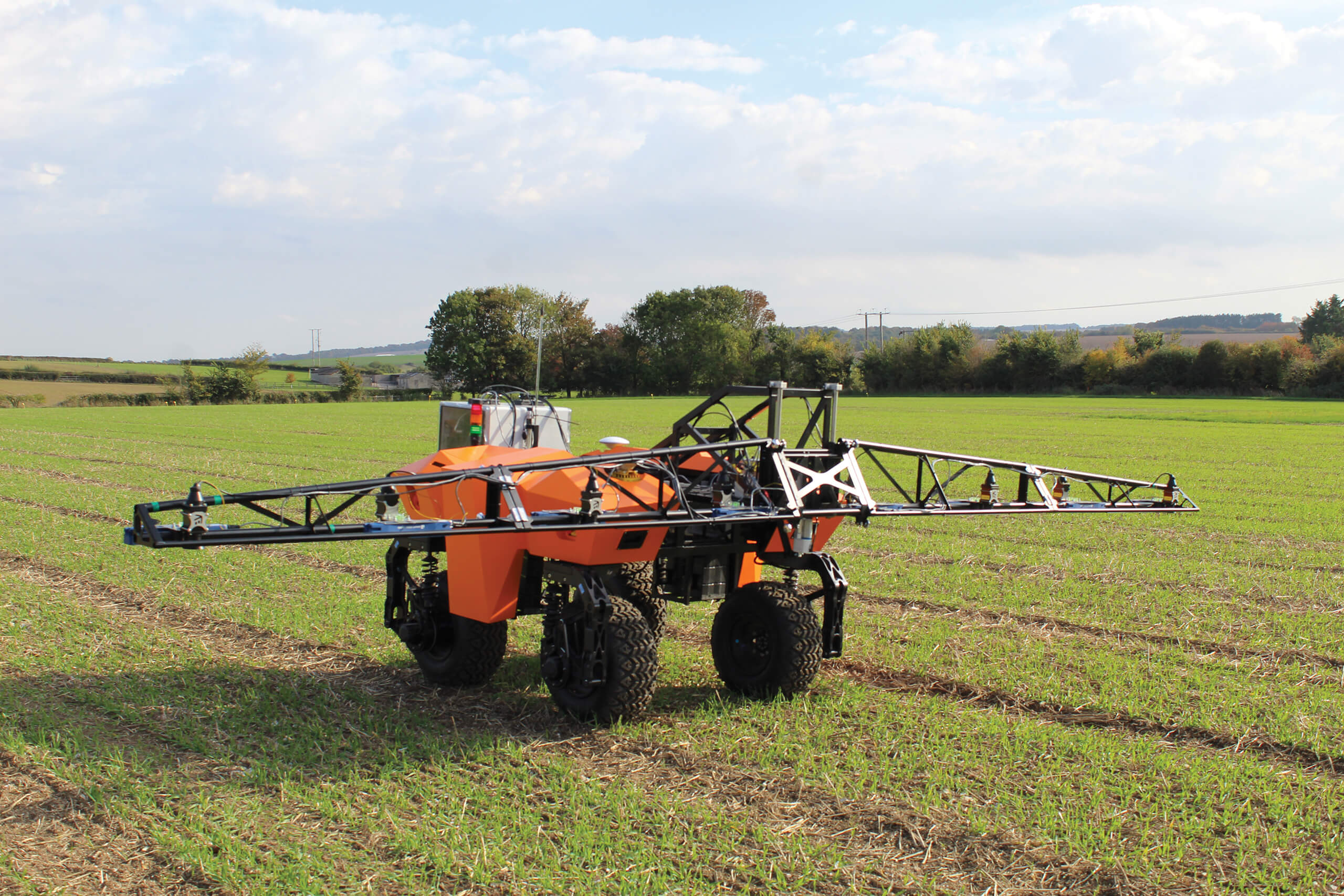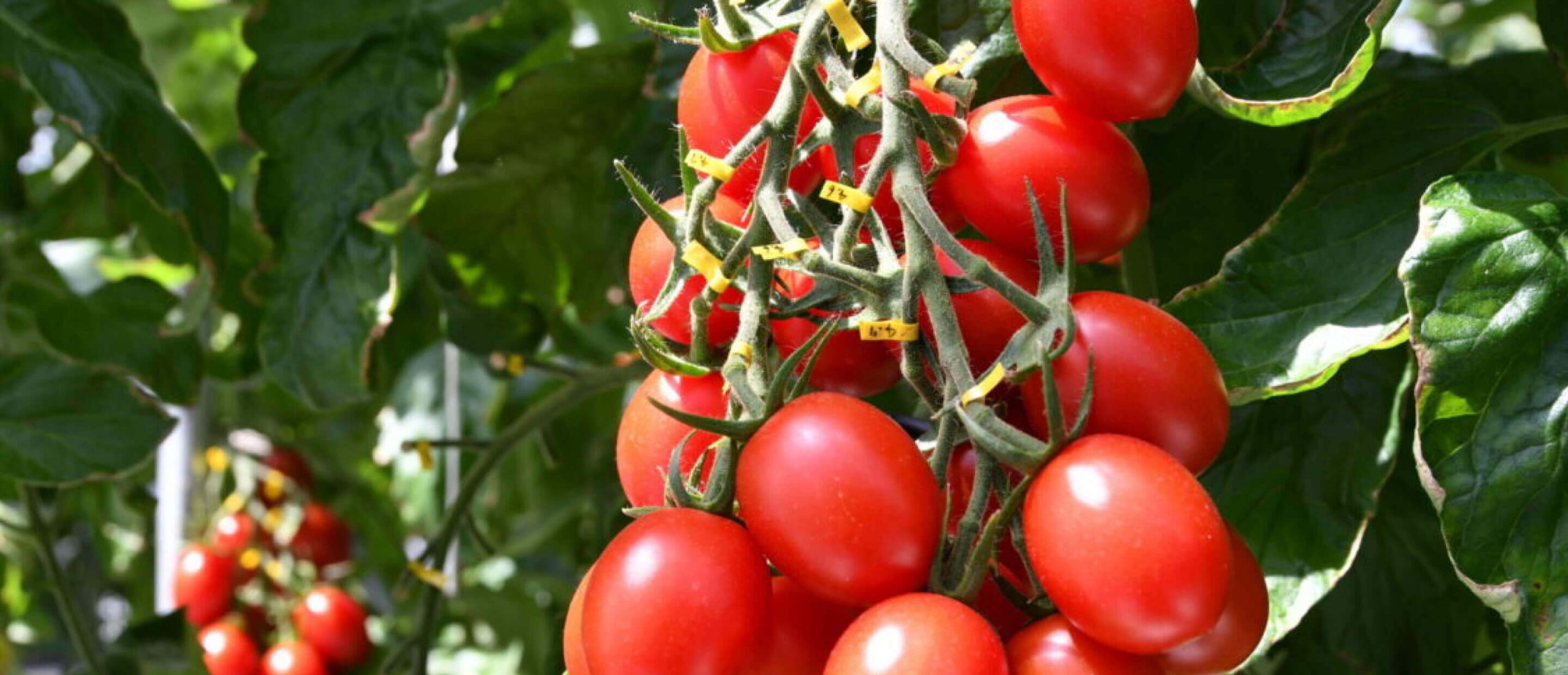
Researchers are developing new tools to “prime” plant defenses to better resist crop pests and diseases, including damaging viruses.
Viruses may be tiny but they pack a punch. These minuscule pieces of genetic information act as hijackers, taking over host cells and making use of its replication machinery to multiply. Left unchecked, infected cells soon become virus factories.

Despite massive advances in crop protection, controlling viruses remains a big challenge. Plant viruses can devastate farmers’ crops and are the cause of nearly half the emerging plant diseases worldwide. They also contribute to 10-15% of yield loss and are estimated to cost $60 billion globally each year .
With no virucides or vaccination programs to protect crops, farmers focus on avoidance. They rely on integrated pest management (IPM) strategies, such as planting virus-free seed and using hygiene practices to eliminate weeds or plants that could harbor viruses.
Other methods include adjusting planting schedules to avoid periods when the vectors – such as insects, nematodes, or fungi – that spread viral diseases are most active. Farmers can also use crop protection products to target these vectors to reduce the risk of virus transmission.
Priming plant defences
Plant breeders have successfully identified and incorporated resistance genes into varieties that mitigate the effects of some viruses, but it’s painstaking work. With viruses still presenting a costly problem, could the same principles that make vaccination so successful in people and animals also help plants defend themselves?
Though plants have a different biology from humans, they still have a complex defense system that acts as their immune system. This defense is built on sensory receptors that set off a cascade of chemical signals when they detect a pathogen. Just like in people, this defense system can be ‘primed’ so that it can react faster to disease threats, creating the potential for plant vaccines.
Inoculating crops with weakened strains
Early research has focused on using weakened versions of viruses, known as attenuated strains, to protect crops – a method called “cross-protection”. This approach has already led to the registration of vaccine-type products for certain high-value crops, for example, pepino mosaic virus in greenhouse tomatoes in Europe and North America, as well as for zucchini yellow mosaic virus and pepper mild mottle virus in Japan.
In a 2024 review, Japanese experts noted that while this technology shows great promise, it has some flaws. Occasionally, plants aren’t fully inoculated by the protective strains, which can leave them vulnerable. To counter this, they suggest viral plant vaccines need to focus on combining a number of isolates for greater protection. There’s also a risk in employing cross-protection using a mild strain of a virus.
Writing in Phytopathology, researchers at the USDA’s Agricultural Research Service at the University of Nebraska-Lincoln point out that severe viruses can overcome the protection from the vaccine with the emergence of new variants. This can happen through recombination, evolution, or both. Additionally, mild strains can impact new susceptible hosts, potentially causing severe economic damage.
Harnessing RNA interference
Researchers have been developing an alternative approach to using attenuated viruses to prime plants against infection. Instead, they’re looking at the natural mechanism behind cross-protection, known as RNA interference, and figuring out how they can harness this defense mechanism to help plants resist threats from diseases and attacks from pests.
RNAi isn’t new, it was discovered in plants in the early 1990s. Dr. Rosa Lozano-Durán explains in The EMBO Journal that when plants detect virus-related double-stranded RNA, they activate RNAi (gene silencing) as a defense mechanism. This process either breaks down the viral RNA or stops it from copying itself, helping to control the infection.
The RNAi mechanism is already being used in transgenic breeding programs to combat pests and diseases. Plant breeders have recently released a variety of corn which combines three traits against corn rootworm – two Bt traits and an RNAi trait which provides a brand new mode of action.
But the current buzz around the RNAi mechanism is its potential for topical application as a targeted biopesticide spray, stem injection, root drench, or seed treatment. It’s no easy task because RNA is notoriously unstable, so delivery systems are a key focus for research to create viable biopesticide products. But teams around the globe are investigating the potential of RNAi biopesticides because of the benefits they offer. Used in this way, RNAi could provide farmers with highly targeted and sustainable solutions to pest and disease problems, and in a much quicker timescale than it takes to develop a transgenic crop.

Dr. Karl Robinson and his team are developing RNAi biopesticides to target both virus vectors and viruses. Source: University of Queensland.
Targeting vector and disease
At the University of Queensland in Australia, Dr. Karl Robinson and his team are developing a holistic approach using RNAi to target virus-vector-plant interactions. The researchers’ previous studies have shown that RNAi can protect plants against virulent viral infections for around 15 days, but Robinson believes there is potential to use RNAi to much greater effect.
“We’re only looking at one third of the picture,” he says. “Plant interaction with viruses is a complex interplay of numerous factors which are highly interdependent. It is my opinion that RNAi won’t work if we’re targeting things individually.”
Plant interaction with viruses is a complex interplay of numerous factors which are highly interdependent.
Having successfully explored one of these interactions – employing RNAi against virus infection in crops – the Australians have expanded their research to target virus vectors, such as aphids. Their aim is to use the RNAi mechanism to interfere with the way vectors transmit viruses to plants.
“If we deploy RNAi in the virus, the vector, and the plant in a more holistic approach, we have a real chance of developing biopesticides against viral infection in crops. In 2025, the objective for our RNAi work targeting viruses and insect pests is to translate our crop protection applications from a successful research-scale glasshouse application to an effective farm-scale application,” says Robinson.
“To achieve this, we aim to address several “translation-to-industry” questions regarding the utility of RNAi technologies applied to various food and fiber production systems.”
Although there are still hurdles to overcome, teams around the globe are investigating RNAi biopesticides because of the potential benefits they offer – they could provide farmers with a highly targeted and sustainable way to control pests and diseases. “We hope to one day deliver clean, green, persistent, and effective crop protection strategies using RNAi-based biopesticides,” he adds.

It’s a vision that may be on the cusp of becoming reality. In fact, the world’s first RNAi biopesticide has just been licensed in the U.S. for Colorado beetle control in potatoes – a pest that’s problematic because it’s economically damaging, difficult to control, and has developed insecticide resistance.
The biopesticide works by temporarily preventing the beetle from making a protein that it needs to survive, giving the potato crop a chance to thrive.Further innovations using RNAi technology are likely to follow. In the U.S., the National Institute of Food and Agriculture is funding work at the University of California, where researchers are looking into using plant virus nanoparticle technology to deliver non-infectious mRNA into plants as vaccines. The aim is to temporarily equip plants to resist disease, overcome droughts, or perform new functions without changing their DNA.
Although there are still hurdles to overcome, RNAi biopesticides could provide a highly targeted way to control not just viruses, but specific fungal and bacterial diseases as well. But nature has a remarkable way of adapting, and pathogens can develop resistance. Even with another useful tool in the toolbox, integrated approaches to pest management will remain important.
What is RNA interference?
RNA interference (RNAi) is a natural cellular process found in many living things, like fungi, plants, animals, and humans. It helps manage the production of specific proteins by “silencing” certain genes to keep things running smoothly, but it can also be used to disrupt normal function.
What does RNAi do?
RNAi is a way to silence genes after transcription by breaking down or blocking mRNA. This stops the production of specific proteins.
How do cells turn DNA into proteins?
There are two main steps:
- Transcription:
This happens in the cell’s nucleus, where DNA is used to make a messenger RNA (mRNA) copy. - Translation:
This occurs in the cell’s cytoplasm, where the mRNA guides the assembly of amino acids into protein

How does RNAi compare to gene editing?
- RNAi reduces gene activity by targeting and destroying mRNA, preventing it from making proteins.
- Gene editing (like CRISPR/Cas9) makes permanent changes to the DNA by cutting out specific genes.




